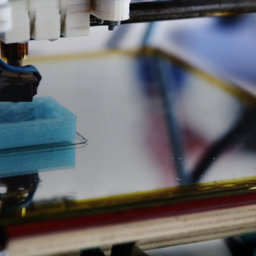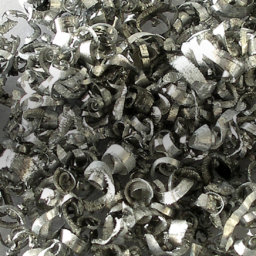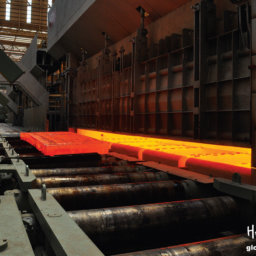Throughout history, submarines have been thought of as mysterious ocean vessels that use stealth tactics and deep submersion to seek and destroy enemy vessels. While this is often true, submersibles have also played a major part in oceanic research, discovering lost ships like the Titanic, and reaching world-record depths into the dark, unknown cracks and crevices of our planet’s seas.
Submarines therefore must be built using the best and strongest materials possible to be able to endure long, underwater missions, and deep sea exploration.
Any metal used to build a submarine must contain certain properties and attributes to adequately handle being submerged for long periods of time while incurring underwater pressure. The metal used to build a submarine must be dense, shape-forming, malleable, non-corrosive and lightweight.
Steel has the ability to withstand corrosion and avoid oxidizing reactions such as rust. It is also lightweight enough that it can be fast and effective in maneuvering underwater.
A Hull Lot of Steel
Submarines used for military activity have gone through many shape transformations since first being commissioned. Several designs were experimented with before settling on the recognizable hydrodynamic teardrop shape. The outer shell, or hull, of the submarine is commonly constructed of steel alloy.

Submarines can have either a double or single-hull construction, which affects speed or maneuverability depending on which type of hull is used. American submarines are typically made of a single-hulled steel plating layer that creates the optimized shape needed for advanced warfare capabilities.
Inside the outer hull is the pressure hull, which is responsible for allowing the submarines to reach depths of 250-350 meters. The pressure hull, one of the most important components of a submarine, is constructed of thick, high-strength steel that is divided into several compartments.
The pressure hull’s construction is a delicate process requiring high degrees of precision to build. If a hull contains any defects, it could jeopardize the integrity of the entire submarine.
With today’s modern nuclear submarines, the predominant material used in manufacturing is still mainly steel. In order to be able to carry delicate nuclear warheads, the submarine must be made strong and dependable. Steel is used to construct the inner hull that contains the vessel’s crew and inner mechanics, as well as the outer hull. The layer between the inner and outer hull is used as the submarine’s ballast tank system, which lets water in and out, enabling the submarine to rise and dive.
Setting Depth Records with Steel
On March 26, 2012, famed Hollywood director James Cameron and his DEEPSEA CHALLENGE expedition team set a world record with their submarine solo dive to the deepest known place on earth.
DEEPSEA CHALLENGE states that the historic expedition to the Mariana Trench’s lowest point, the Challenger Deep, which lies 6.83 miles (10.99 kilometers) below the ocean surface, was the first extensive scientific exploration in a manned submersible of the deepest spot on earth.
Several different types of materials were used to construct the DEEPSEA CHALLENGER submarine, however, the pilot’s sphere was built from steel.
According to DEEPSEA CHALLENGE, the steel orb was equipped to make sure the pilot gets oxygen, stays warm, and is shielded from the deep-sea pressure.
Engineers made the pilot’s chamber spherical because the shape can be both strong and light. They also made the steel 2.5 inches (6.4 centimeters) thick to withstand the crushing pressure of the deep.
The Ocean’s Steel Whales
As oceanic vessel technology advances, so too will the designs and materials used to build submarines. One aspect that will remain constant however, is the use of steel. Submarines will remain a vital part of national defense and further ocean exploration for many years to come. Designs will continue to improve submarines’ speed and maneuverability, as well as the depths they are capable of reaching.

Modern submarines, however, will continue to be made mostly of steel, proving that the metal is perfect for keeping the ocean’s steel whales swimming into the future.










